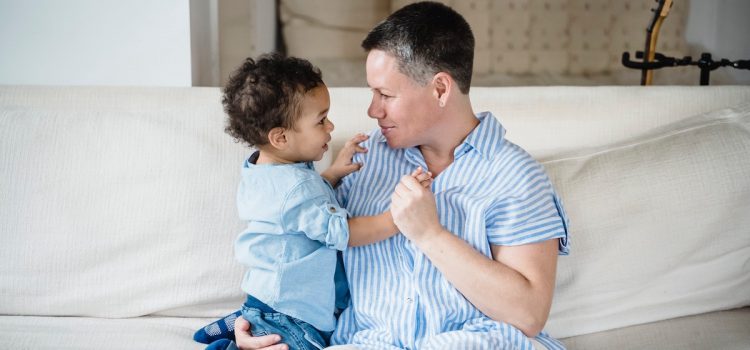

This article is an excerpt from the Shortform book guide to "The Book You Wish Your Parents Had Read" by Philippa Perry. Shortform has the world's best summaries and analyses of books you should be reading.
Like this article? Sign up for a free trial here.
Why do some people find it hard to trust others? How early in life are this ability and its related skills formed?
Psychotherapist and mother Philippa Perry argues that an important aspect of developing a strong, lifelong parent-child bond is helping your child form the right attachment style. It’s also the way to equip your child to form healthy relationships with others throughout their life.
Keep reading to learn how to practice secure attachment parenting by providing consistent care from the start.
Secure Attachment Parenting
According to attachment theory, babies are born with the ability to bond with other humans, and they take their cues for how to do this from their parents. The way their parents interact with them in this early stage of life—when they’re learning how bonds are formed—determines how they’ll relate to others throughout their lives.
(Shortform note: Attachment theory was first developed by psychologist John Bowlby in the 1950s. In The Happiness Hypothesis, Jonathan Haidt describes how Bowlby studied maladjusted and orphaned children in post-World War II Europe. He found that love was paramount to a child’s development. Children who’d been deprived of the love of a parent because of the war struggled to form healthy relationships. They were either cold and distant or tended to form close attachments to anyone who showed them the slightest attention.)
Secure attachment parenting generally makes relationships and other aspects of life much easier for the child—and that’s true throughout their lives. When you’re consistently offered affection, fed, comforted, and attended to as a baby, you tend to form a secure attachment style. You grow up able to trust and connect with others, and you believe in people’s goodness.
(Shortform note: In The Body Keeps the Score, Bessel van der Kolk states that in addition to forming healthy relationships, securely attached individuals are more resilient in the face of life’s challenges. They understand when they have control over a situation and when things are out of their hands, and they have a sense of agency. This sense of agency gives them confidence that they have control over their emotions and can change their circumstances.)
If you weren’t cared for consistently as an infant, you may develop an unhealthy attachment style, such as the following:
- Insecure attachment: If you had to cry for long periods to get your parents’ attention, you’ll likely grow up feeling like the only way to get others’ attention is to be bold and forceful when expressing your needs.
- Avoidant attachment: If your cries went unanswered, you probably eventually stopped trying to get your parents’ attention. You may develop a sense of isolation, believing that you won’t be heard or understood by anyone. Therefore, you grow up feeling like there’s no point in letting people get to know you well.
- Dismissive attachment: If the attention you received was harmful or abusive, you might grow up feeling like other people are always a threat to you.
| A Closer Look at Unhealthy Attachment Styles Van der Kolk expands on the three unhealthy attachment styles in The Body Keeps the Score: Anxious/insecure attachment: He uses the term “anxiously attached” for the individuals Perry calls insecurely attached. Anxious attachment is a type of insecure attachment. He states that people with this attachment style tend to be victims of bullying by their peers. Avoidant attachment: According to van der Kolk, this is also a type of insecure attachment. Avoidantly attached individuals become adults who aren’t in touch with their feelings or others’ feelings, and they often become bullies as children and adults. Disorganized/dismissive attachment: What Perry calls dismissive attachment, van der Kolk calls disorganized attachment. It forms when a baby fears their caregiver—they’re stuck between needing that caregiver for survival and being scared of them. Therefore, the baby doesn’t know how to engage with their caregiver. Children with disorganized attachment often become aggressive or disengaged and exhibit related physical symptoms, including increased heart rate, high levels of stress hormones, and weakened immune systems. As adults, people with disorganized attachment can’t distinguish whom they can trust from whom they should fear, so they may be overly affectionate with strangers or distrustful of everyone. |
Putting It Into Practice: Consider Your Own Attachment Style
Perry states that the ideal is to create a secure attachment with your baby. To do this, think about what your attachment style might be. Do you form close, secure attachments with people, or do you struggle with this? If your experience is the latter, you may need to be more mindful about forming your relationship with your baby to create a secure attachment with them.
(Shortform note: If you’re unsure where to begin when discovering your attachment style, consider taking an online assessment. This could give you a baseline for understanding what your traits and behaviors indicate. You can also speak to a therapist to learn more about your attachment style. Many therapists use attachment theory in their practice because of the interconnected nature of mental health and relationships.)
Putting It Into Practice: Respond to Your Baby’s Cries
Second, Perry states that the best way to create a secure attachment is by consistently responding to your baby’s cries. Babies can express themselves only by crying out. They can’t soothe themselves, nor do they have object permanence (our ability to discern that something exists when we can’t see it). So, they can’t reason with themselves and know that you’re still close to them if you’re not within their sight. When no one responds to them, they feel alone and scared.
Responding to babies’ cries is how you show them that they’re safe—they learn how to soothe themselves when you’re consistently comforting them and showing them that you’re there for them. If, in contrast, you frequently let your baby cry for long periods without going to them, Perry argues that they’ll eventually stop crying because they’re suppressing the feelings that make them cry—not because they’ve learned to calm down in a healthy way.

———End of Preview———
Like what you just read? Read the rest of the world's best book summary and analysis of Philippa Perry's "The Book You Wish Your Parents Had Read" at Shortform.
Here's what you'll find in our full The Book You Wish Your Parents Had Read summary:
- The tools you need to cultivate a healthy relationship with your child
- How to make sure your child is an emotionally secure individual
- Why the way you speak about yourself has a big impact on your child






